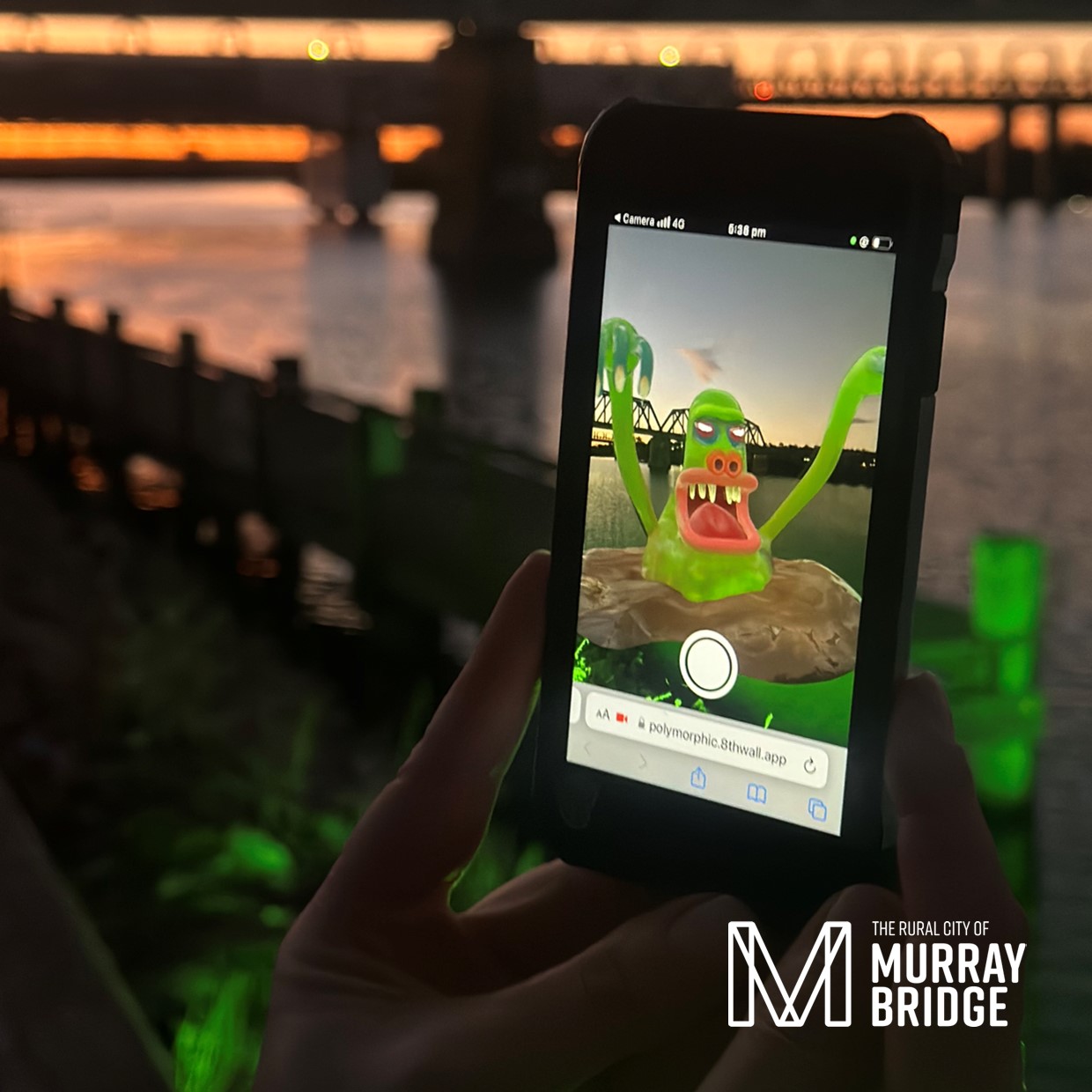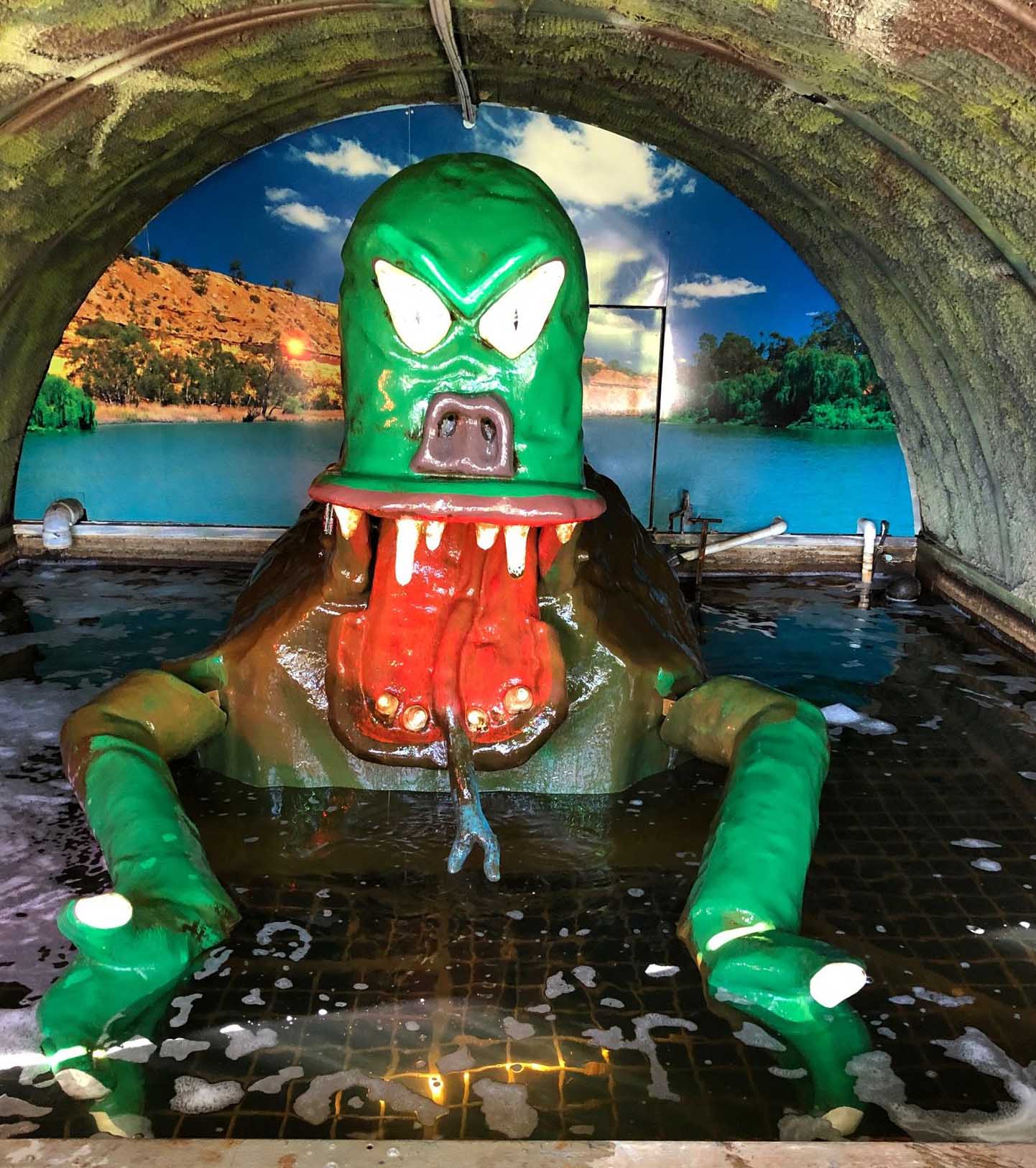
THE BUNYIP HAS TEMPORARILY GONE DIGITAL
THE BUNYIP is going digital in the lead up to Christmas, while the beloved South Australian icon disappears from public life temporarily to ‘have some work done’.
An Augmented Reality version of the animatronic tourist attraction will be accessible at the riverfront at Sturt Reserve, in Murray Bridge, while repairs are undertaken.
The Bunyip is being repaired due to a mechanical issue. Local enterprise Australian Custom Engineering is working on a fix to restore The Bunyip to the usual roarsome character people love to visit, as soon as possible.
In the meantime, visitors will be able to access an interactive Augmented Reality version of The Bunyip using their mobile phones and a QR code at The Bunyip’s cave.

The Mulyawonk (The Bunyip) (pronounced as Mool-ya-wonk)
To the Ngarrindjeri people the Bunyip is known as the Mulyawonk.
Whilst the Mulyawonk Creation Story may vary from Lakalinyeri (clan) to Lakalinyeri (clan), the Ngarrindjeri Mulyawonk Creation Story in part says,
In times long ago there lived a Ngarrindjeri Korni (man) who was greedy catching far too many fish than he needed to.
The Elders were not happy with this selfish man who did not respect the Ngarrindjeri laws of fishing.
The Elders were so angry with this man that as a punishment they turned him into the Mulyawonk - a half fish, half man creature and banishing him to the river forever.
Ngarrindjeri children are told never to swim alone or to take more fish than you can eat from the river and lakes.
If you do swim alone or are greedy in taking too many fish, then the Mulyawonk will get you.
This story teaches children water safety and respect for the fish of the river and lakes.
One home of the Mulyawonk is in a river cave near Tailem Bend.
The word Bunyip has its origins from the Wemba-Wemba or Wergaia language of Aboriginal people of South-Eastern Australia.
It can be said that during European occupation, Aboriginal people warned Europeans of the dangers of river and lake swimming and that certain areas were prohibited to visit, for if you did, you would fall victim to a Bunyip (the Mulyawonk on Ngarrindjeri Ruwi (land) and Ngarrindjeri Moorundi (river).
Bertha's Story
The Murray Bridge Bunyip was built by Dennis Newell and launched in 1972. For 20 cents the bunyip emerged from below the water and gave a very loud roar - twice. This roar could be heard up to one kilometre away. The ugly looking monster did frighten many small children.
His name was Bert the Bunyip. The Bunyip was given a baby about 10 years after the launch... Bert then became Bertha.
The sound box has had many problems during its time... at one stage vandals somehow worked out how to jam it so it would continue to roar - often through all hours of the night.
Then the Bunyip and baby were also vandalised and part was broken off. A quieter, friendlier looking Bunyip was built and her cave was revamped in 2000.
The price rose to $1 for three appearances. Following major repairs in 2018, visitor can now view the Bunyip for free. The Bunyip receives in excess of 20,000 visitors per year.
The Murray Bridge Bunyip can be found lurking in her cave today on the banks of the Murray River at Sturt Reserve Murray Bridge
